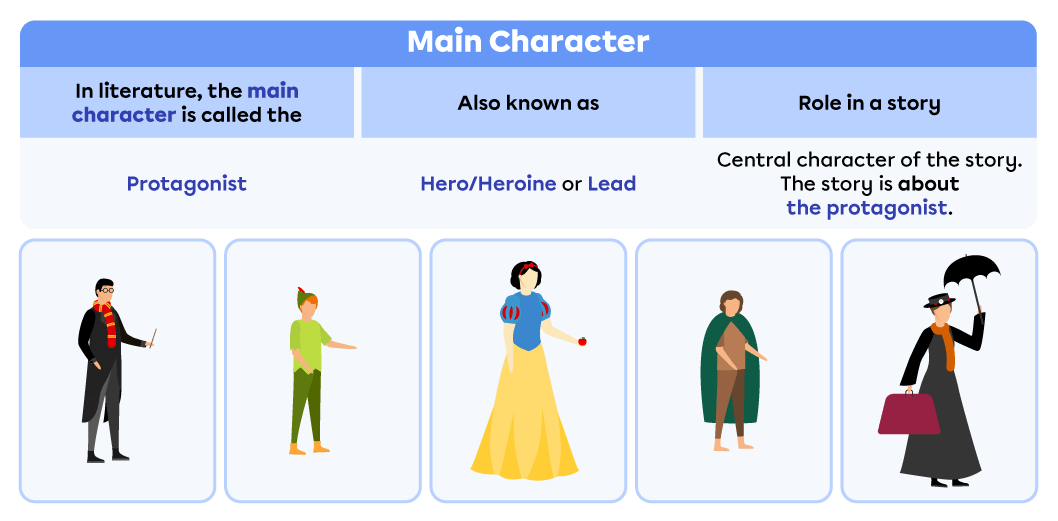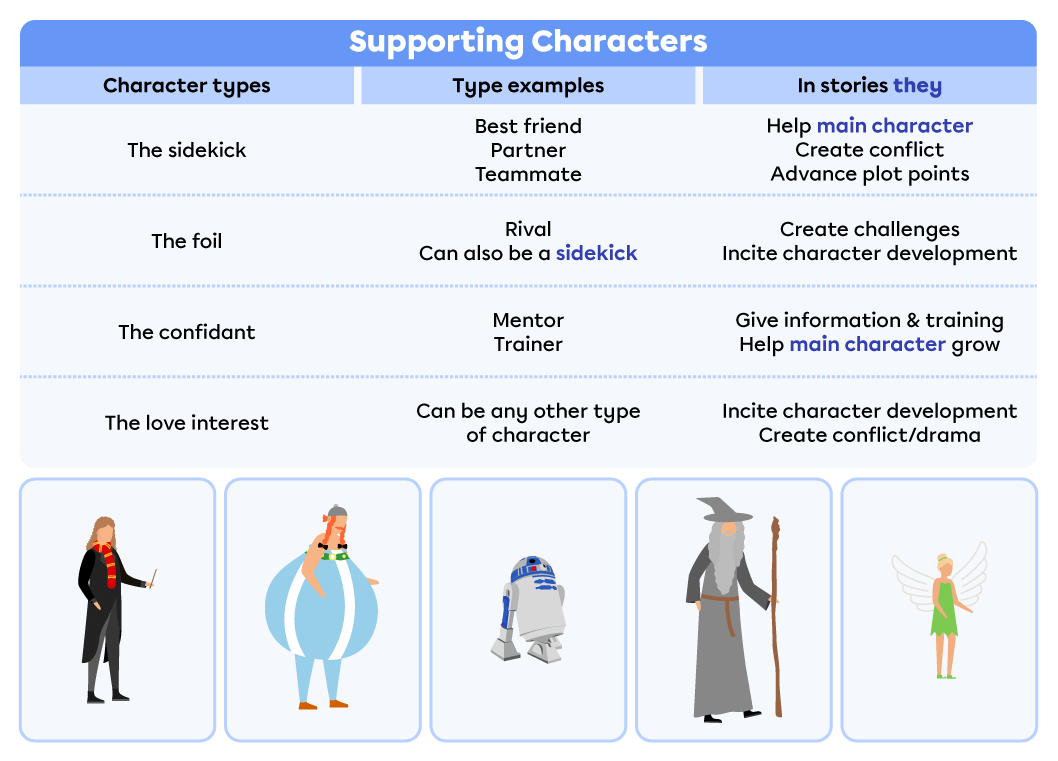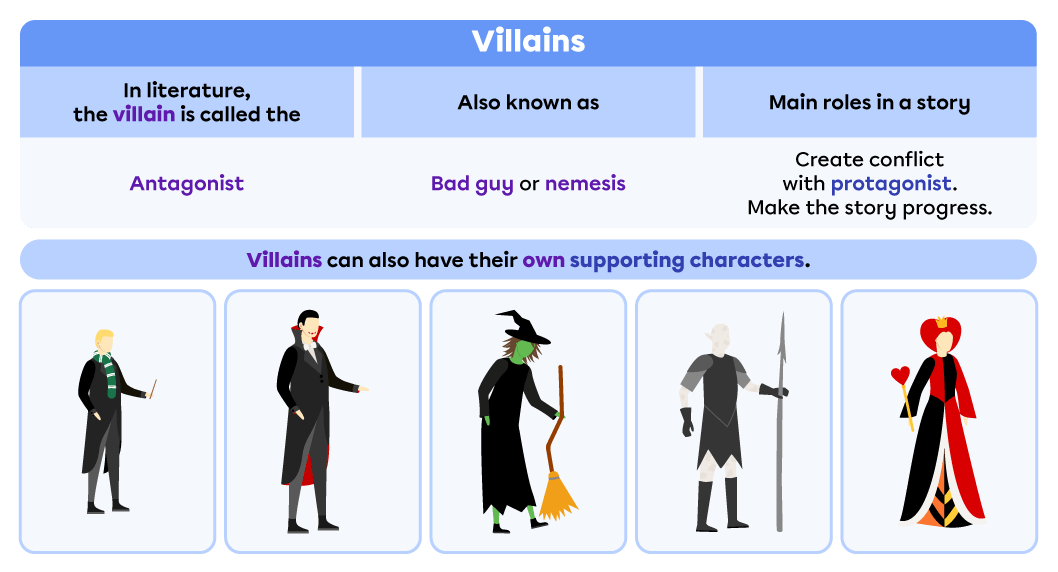Narrative texts contain a lot of characters. Here are some examples of character types often used in stories.



|
Main character in a story. The character responsible for making the story progress. |
Frodo Baggins in The Lord of the Rings series (Tolkien, 1954-1955) |
|
Main character’s adversary. The character responsible for creating conflict for the protagonist. |
Lord Voldemort to Harry Potter in the Harry Potter series (Rowling, 1997-2007) |
|
A supporting character helping the protagonist progress through a story. Often also serves as the foil for the protagonist. |
Samwise Gamgee to Frodo Baggins in The Lord of the Rings series (Tolkien, 1954-1955) |
|
A character used to elevate and emphasize another character’s qualities by contrasting them. The foil can be on the protagonist’s side (sidekick) or against (antagonist). |
Dr. John Watson to Sherlock Holmes in the Sherlock Holmes series (Doyle, 1887-1927) |
|
Well developed and complex characters that affect and change with the story. |
Hermione Granger in the Harry Potter series (Rowling, 1997-2007) |
|
Characters with 1 or 2 simple traits used to advance certain plot points. They serve a specific purpose in the story. |
Boromir in The Lord of the Rings series (Tolkien, 1954-1955) |
|
A type of character with universal attributes and easily recognizable qualities. |
Lover archetype: |
Romeo & Juliet in Romeo and Juliet (Shakespeare 1597) |
|
Creator archetype: |
Dr. Victor Frankenstein in Frankenstein (Shelley, 1818) |
|
|
Everyman archetype: |
Arthur Dent in The Hitchhiker's Guide to the Galaxy (Douglas 1979) |
|
|
Mentor archetype: |
Albus Dumbledore in the Harry Potter series (Rowling, 1997-2007) |